There are many (many) questions about computing the size (width or height) of a string that should be painted into a Swing component. And there are many proposed solutions. However, I noticed that most of these solutions do not work properly for small fonts.
The following is an MCVE that shows some of the approaches:
import java.awt.Color;
import java.awt.Font;
import java.awt.FontMetrics;
import java.awt.Graphics;
import java.awt.Graphics2D;
import java.awt.GridLayout;
import java.awt.Shape;
import java.awt.font.FontRenderContext;
import java.awt.font.GlyphVector;
import java.awt.font.TextLayout;
import java.awt.geom.AffineTransform;
import java.awt.geom.Rectangle2D;
import java.util.function.BiFunction;
import javax.swing.JFrame;
import javax.swing.JPanel;
import javax.swing.SwingUtilities;
public class TextBoundsTest
{
public static void main(String[] args)
{
SwingUtilities.invokeLater(new Runnable()
{
@Override
public void run()
{
createAndShowGUI();
}
});
}
private static void createAndShowGUI()
{
JFrame f = new JFrame();
f.setDefaultCloseOperation(JFrame.EXIT_ON_CLOSE);
Font baseFont = new Font("Sans Serif", Font.PLAIN, 10);
Font smallFont0 = baseFont.deriveFont(0.5f);
Font smallFont1 = baseFont.deriveFont(0.4f);
f.getContentPane().setLayout(new GridLayout(5,2));
f.getContentPane().add(
new TextBoundsTestPanel(smallFont0,
TextBoundsTest::computeBoundsWithFontMetrics,
"FontMetrics"));
f.getContentPane().add(
new TextBoundsTestPanel(smallFont1,
TextBoundsTest::computeBoundsWithFontMetrics,
"FontMetrics"));
f.getContentPane().add(
new TextBoundsTestPanel(smallFont0,
TextBoundsTest::computeBoundsWithFontAndFontRenderContext,
"Font+FontRenderContext"));
f.getContentPane().add(
new TextBoundsTestPanel(smallFont1,
TextBoundsTest::computeBoundsWithFontAndFontRenderContext,
"Font+FontRenderContext"));
f.getContentPane().add(
new TextBoundsTestPanel(smallFont0,
TextBoundsTest::computeBoundsWithGlyphVectorLogicalBounds,
"GlyphVectorLogicalBounds"));
f.getContentPane().add(
new TextBoundsTestPanel(smallFont1,
TextBoundsTest::computeBoundsWithGlyphVectorLogicalBounds,
"GlyphVectorLogicalBounds"));
f.getContentPane().add(
new TextBoundsTestPanel(smallFont0,
TextBoundsTest::computeBoundsWithGlyphVectorVisualBounds,
"GlyphVectorVisualBounds"));
f.getContentPane().add(
new TextBoundsTestPanel(smallFont1,
TextBoundsTest::computeBoundsWithGlyphVectorVisualBounds,
"GlyphVectorVisualBounds"));
f.getContentPane().add(
new TextBoundsTestPanel(smallFont0,
TextBoundsTest::computeBoundsWithTextLayout,
"TextLayout"));
f.getContentPane().add(
new TextBoundsTestPanel(smallFont1,
TextBoundsTest::computeBoundsWithTextLayout,
"TextLayout"));
f.setSize(600,800);
f.setLocationRelativeTo(null);
f.setVisible(true);
}
private static Rectangle2D computeBoundsWithFontMetrics(
String string, Graphics2D g)
{
FontMetrics fontMetrics = g.getFontMetrics();
Rectangle2D bounds = fontMetrics.getStringBounds(string, g);
return bounds;
}
private static Rectangle2D computeBoundsWithFontAndFontRenderContext(
String string, Graphics2D g)
{
FontRenderContext fontRenderContext =
new FontRenderContext(g.getTransform(),true, true);
Font font = g.getFont();
Rectangle2D bounds = font.getStringBounds(string, fontRenderContext);
return bounds;
}
private static Rectangle2D computeBoundsWithGlyphVectorLogicalBounds(
String string, Graphics2D g)
{
FontRenderContext fontRenderContext = g.getFontRenderContext();
Font font = g.getFont();
GlyphVector glyphVector = font.createGlyphVector(
fontRenderContext, string);
return glyphVector.getLogicalBounds();
}
private static Rectangle2D computeBoundsWithGlyphVectorVisualBounds(
String string, Graphics2D g)
{
FontRenderContext fontRenderContext = g.getFontRenderContext();
Font font = g.getFont();
GlyphVector glyphVector = font.createGlyphVector(
fontRenderContext, string);
return glyphVector.getVisualBounds();
}
private static Rectangle2D computeBoundsWithTextLayout(
String string, Graphics2D g)
{
FontRenderContext fontRenderContext = g.getFontRenderContext();
Font font = g.getFont();
TextLayout textLayout = new TextLayout(string, font, fontRenderContext);
return textLayout.getBounds();
}
}
class TextBoundsTestPanel extends JPanel
{
private final Font textFont;
private final BiFunction<String, Graphics2D, Rectangle2D> boundsComputer;
private final String boundsComputerName;
TextBoundsTestPanel(Font textFont,
BiFunction<String, Graphics2D, Rectangle2D> boundsComputer,
String boundsComputerName)
{
this.textFont = textFont;
this.boundsComputer = boundsComputer;
this.boundsComputerName = boundsComputerName;
}
@Override
protected void paintComponent(Graphics gr)
{
super.paintComponent(gr);
Graphics2D g = (Graphics2D)gr;
g.setColor(Color.WHITE);
g.fillRect(0, 0, getWidth(), getHeight());
g.setColor(Color.BLACK);
g.drawString("Font size: "+textFont.getSize2D(), 10, 20);
g.drawString("Bounds : "+boundsComputerName, 10, 40);
AffineTransform oldAt = g.getTransform();
AffineTransform at = AffineTransform.getScaleInstance(50, 50);
g.transform(at);
g.translate(1, 2);
g.setFont(textFont);
String string = "Test";
g.drawString(string, 0, 0);
Rectangle2D bounds = boundsComputer.apply(string, g);
Shape boundsShape = at.createTransformedShape(bounds);
g.setTransform(oldAt);
g.setColor(Color.RED);
g.translate(50, 100);
g.draw(boundsShape);
}
}
The result of this program is shown in this screenshot:

As one can see, the simple methods work nicely for a font with size 0.5, but suddenly bail out and return bounds with a height of 0.0 for the font with size 0.4.
(Side note: I wonder whether this is simply a bug - although it might be caused by some internal round-off-errors, as it happens exactly between font sizes of 0.5 and 0.49 ...)
The only solutions that work for these smaller fonts are the computation using a GlyphVector, or the TextLayout. But both of these approaches are tremendously expensive, as they require the creation of the Shape of the string and lots of auxiliary objects. Furthermore, they only return the visual bounds (that is, the bounds of the actual shape), and not the logical bounds of the text.
Is there any efficient solution for computing the logical bounds of strings in small fonts?
